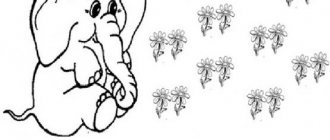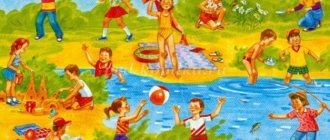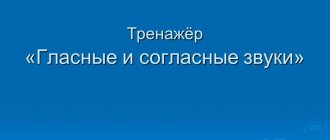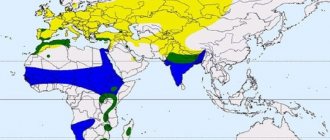Lesson summary: story based on a picture; plan-summary of a lesson on speech development (senior group) on the topic
GBOU School No. 1080
Writing a story
based on the painting “We are on duty”
Moscow
2017
Target:
- develop the ability (based on a model) to compose a story based on a picture.
Tasks:
- expand your understanding of tableware, its purpose, the details and parts of which it consists;
- cultivate feelings of empathy (the desire to help a friend).
Educational area:
- Communication (connected speech).
Integration of educational areas:
- Cognition (Formation of a holistic picture of the world, broadening one’s horizons)
- Socialization (Introduction to basic generally accepted norms and rules of relationships)
Forms of direct educational activities:
- cognitive-research (games with rules, examination), communicative (conversation, leading dialogue, situational conversation), gaming (games with rules, didactic games).
Forms of organization:
- subgroup.
Preliminary work:
- observation of those on duty at sensitive moments.
Equipment, tools, materials:
- magnetic board, picture “We are on duty”, subject pictures about dishes.
Progress of direct educational activities:
Organizing time.
Game "Name the first sound." Develop phonemic awareness.
The teacher invites the children to take seats next to the chairs.
Educator. The one who names the first sound in the word jug, knife, ladle, plate, mug will sit down.
Children take turns naming the first sound in words.
Educator. Think and say, in one word, what we will talk about today.
Children. About dishes.
Educator. What are the dishes for?
Children. Food is prepared and stored in dishes, and food is eaten from dishes.
Game “Don’t yawn and name the dishes.” To develop children's knowledge about tea, table and kitchen utensils.
The teacher names the dishes, and the children determine what type they belong to.
Looking at the painting. Teach children a holistic perception of the picture, develop dialogical speech.
Educator. This painting is “We are on duty.” Why do you think it is called that?
Children. The picture shows children. They are setting the table. Children are on duty in the dining room.
Educator. Talk about the children who set the table. How are they dressed? What are they holding in their hands?
Children. A girl in short blue pants, an orange T-shirt, and a white apron. She has two braids. She holds spoons in her hands. A boy in brown trousers, a green T-shirt, and a white apron. He has dark short hair. He puts a plate on the table.
Educator. What have they already put on the table?
Children. They covered the table with a white tablecloth, placed a bread box with bread and cups and saucers.
Educator. What dishes are on the table? Describe her. Use words that answer the question “Which one?”
Children. There are cups, saucers, a plate, and a bread box on the table. They are earthenware, bright red, new.
Educator. Who else is in the picture? What are they doing?
Children. Children and a teacher are sitting near a bookcase. The teacher reads a book to the children.
Educator. Tell us about the mood of the teacher and the children.
Children. They are in a joyful mood.
Physical exercise “Teapot”. Develop coordination of speech and movement.
I am a teapot, a grumbler, a busybody, a madman, (Children stand with one hand bent like the spout of a teapot, the other held on their belt) I am showing off my belly to you. (Tummy is inflated) I’m boiling tea, bubbling and shouting: (They stomp with both feet) - Hey, people, I want to drink tea with you. (Make inviting movements with their right hand)
Compiling a story based on a picture. Develop coherent speech.
Educator. Now you will compose a story based on the picture, according to the following plan.
What is the name of the painting and why is it called that?
Describe the people on duty. What are they? How are you dressed? What do they have in their hands? What are they doing? What's already on the table?
Then you need to talk about the teacher and other children.
What's their mood?
Children compose a story in parts, then repeat the story by one of the children.
The result of direct educational activities. (Assessment of children's work).
The teacher invites the children to talk about what they did today, what games and exercises they liked, who did the best, and who needs to be more active and attentive.





